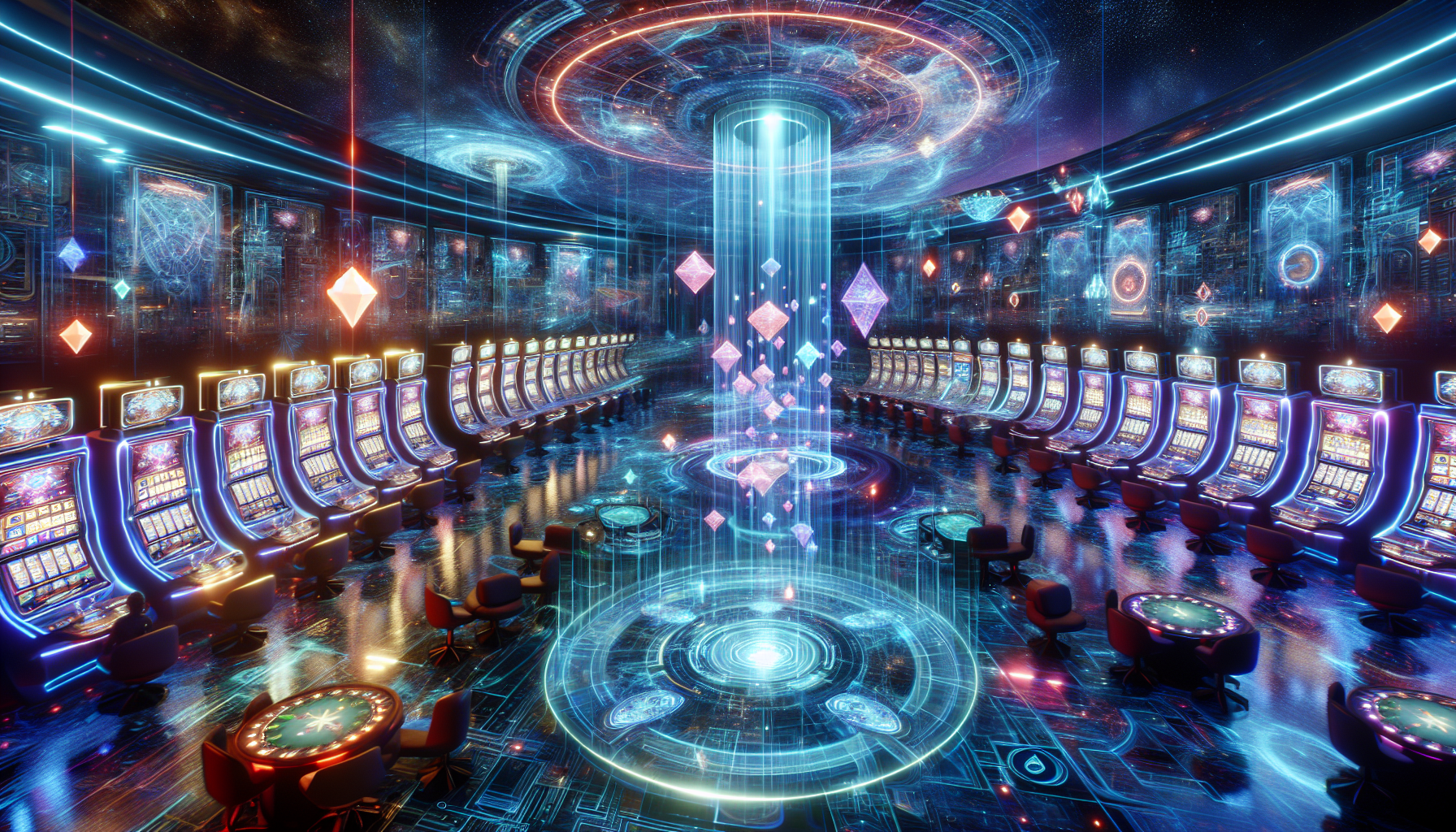VR and AR Casinos: Are They the Next Big Thing in Gaming?

Virtual Reality (VR) and Augmented Reality (AR) are revolutionizing the gaming industry, offering experiences that go beyond traditional online casinos. As these technologies evolve, they promise to create more engaging and interactive environments for players. Understanding the impact of VR and AR on the casino industry is crucial for anyone interested in the future of gaming.
The rapid evolution of online casinos has paved the way for new technologies like VR and AR to enter the scene. These advancements are not just enhancements; they are transforming how players engage with digital casinos. The increasing interest in immersive gaming experiences signifies a shift in consumer expectations and demands, driving innovation within the industry. This transformation holds immense potential to redefine entertainment and interaction within virtual gambling environments.
VR and AR in casinos
VR technology immerses users in a fully digital environment, while AR overlays digital elements onto the real world, enhancing what you see through your device. These technologies stand apart from traditional online casinos by offering a sense of presence and interactivity that static websites cannot match. For those looking to explore these innovations, try real money casino at Lucky Koala as it begins integrating aspects of these innovations to offer a more dynamic user experience.
In contrast to conventional online platforms, VR casinos allow you to explore virtual floors, interact with other avatars, and even participate in live games as if you were there. AR brings a different flavor by enhancing physical spaces with digital cues, making mundane home settings transform into thrilling gaming arenas. Both technologies promise an unparalleled depth of engagement that keeps players returning for more.
As these technologies continue to mature, they bring unprecedented opportunities for personalization and customization. You can tailor your virtual environment to reflect personal preferences, elevating your gaming experience to new heights. This personalization is not just an added feature but a crucial factor that distinguishes VR and AR casinos from their predecessors.
Current trends and developments
The latest trends in VR and AR casinos are focused on creating more realistic and interactive experiences. Companies are leveraging cutting-edge graphics engines to craft detailed virtual worlds that blur the line between reality and simulation. Platforms like Oculus Rift and HTC Vive have been instrumental in driving these developments by providing robust hardware solutions that support high-quality virtual experiences.
Technological advancements such as improved haptic feedback devices are also adding layers of realism to these experiences. Haptic technology allows you to feel physical sensations corresponding to actions performed within the game, enhancing immersion significantly. For instance, when playing roulette in a VR casino, you might feel the vibration of the spinning wheel through your controller.
This progress is not limited to visual enhancements; audio innovations are equally critical. Advanced sound systems create 3D audio environments where sounds come from different directions based on your movement within the game, adding another dimension to the immersive experience. Such comprehensive sensory engagement makes VR and AR casinos highly attractive options for tech-savvy gamers looking for more than just traditional gameplay.
Benefits of VR and AR casinos
The primary benefit of VR and AR casinos is their ability to offer an enhanced user experience that rivals physical casino visits. These platforms enable you to engage with games in ways previously unimaginable, fostering a deeper connection with digital environments. The level of immersion provided by VR allows players to enjoy a lifelike casino experience without leaving their homes.
Moreover, these technologies facilitate social interactions that traditional online platforms struggle to replicate. Virtual worlds offer communal spaces where you can chat with other players or compete against them in real-time games, building friendships and rivalries along the way. This social aspect transforms solitary gaming into a shared adventure.
The potential for community building is immense as VR casinos incorporate features like group events, tournaments, and collaborative challenges. Such elements encourage regular participation by creating a sense of belonging among users. This community-driven approach can significantly enhance player retention rates as gamers seek out connected experiences over isolated gameplay sessions.
Challenges and limitations
Despite their potential, VR and AR casinos face several challenges that may hinder widespread adoption. One major hurdle is the technical requirement; not everyone owns high-end VR headsets or devices capable of supporting augmented reality applications. These technologies also require significant bandwidth for smooth operation, which may not be available while you're away from home. If you want to gamble on the go while you're at a craft beer festival, your mobile device is much easier than lugging around a VR headset.
The financial investment needed for both consumers and developers presents another barrier. High costs associated with developing sophisticated virtual environments can deter companies from diving into this niche market too quickly or expansively. Similarly, consumers may be hesitant to invest heavily in equipment without assurance of worthwhile returns in terms of entertainment value.
User adaptation poses additional challenges as people accustomed to traditional gaming interfaces might find VR/AR systems complex or intimidating at first glance. Ensuring seamless user onboarding through intuitive design will be crucial for overcoming these apprehensions while expanding user bases effectively.